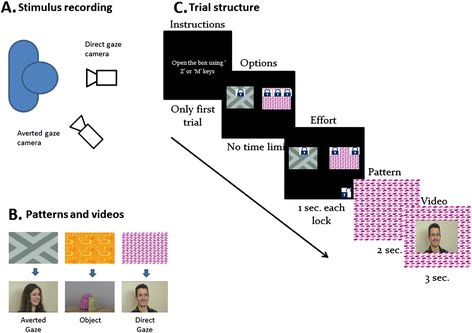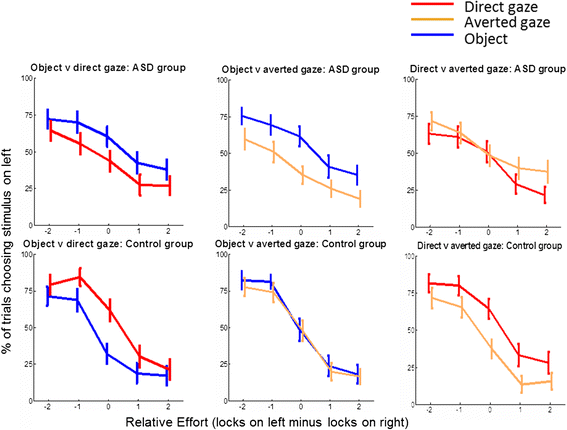Measuring the value of social engagement in adults with and without autism
- PMID: 26097674
- PMCID: PMC4473830
- DOI: 10.1186/s13229-015-0031-2
Measuring the value of social engagement in adults with and without autism
Abstract
Background: Differences in social communication are commonly reported in autism spectrum condition (ASC). A recent theory attributes this to a reduced motivation to engage with others, that is, deficits in social motivation. However, there are currently few simple, direct, behavioural ways to test this claim. This study uses a new behavioural measure of social motivation to test if preferences for direct gaze and face stimuli are linked to autistic traits or an ASC diagnosis. Our novel choose-a-movie (CAM) paradigm measures the effort participants invest to see particular stimuli. This aspect of social motivation is also known as social seeking.
Methods: In experiment 1, 80 typical adults completed the CAM task and a measure of autistic traits. In experiment 2, 30 adults with ASC and 24 age/IQ-matched typical adults completed the CAM paradigm.
Results: The results from study one showed that typical adults prefer social stimuli over non-social, but this preference is weaker in those with higher levels of autistic traits. In study two, adults with ASC showed a significant reduction in their preference for direct gaze but little difference in their preference for faces without direct gaze.
Conclusions: These data show that social motivation can be measured in a simple, direct, behavioural paradigm. Furthermore, adults with ASC prefer direct gaze less than typical adults but may not avoid faces without direct gaze. This data advance our understanding of how social motivation may differ between those with and without autism.
Keywords: Adult behaviour; Autism; Direct gaze; Social motivation; Social reward; Social seeking.
Figures



References
LinkOut - more resources
Full Text Sources
Other Literature Sources
Miscellaneous

